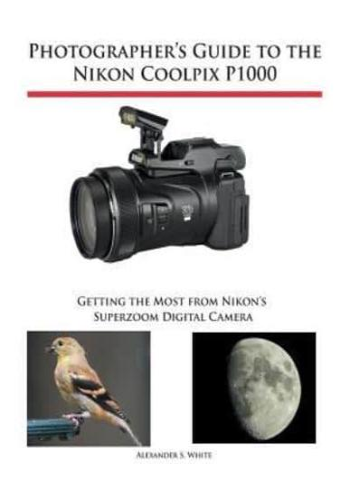This book is a complete guide to the operation of the Nikon Coolpix P1000 digital camera. The book explains all shooting modes, menus, functions, and controls of this superzoom camera, illustrated by more than 300 full-color images. The guide shows beginning and intermediate photographers how to get excellent results using the many features of the P1000.
The book explains topics such as autofocus, manual focus, HDR (High Dynamic Range) photography, ISO sensitivity, memory cards, and flash modes. It discusses techniques for using the P1000's phenomenal zoom lens, with a maximum optical focal length of 3000mm, to full advantage. The book also explains the camera's features for remote control and image transfer using a smartphone or tablet with the P1000's built-in Wi-Fi and Bluetooth capabilities, as well as the camera's features for adding location data to images.
The book includes sample photos taken with the creative options of the camera, including the Picture Control settings, which alter color processing of images; the Bird-watching, Moon, Creative, and Scene shooting modes, with settings optimized for subjects such as landscapes, pets, sunsets, and action shots; and the Coolpix P1000's features for burst shooting and time-lapse photography.
In addition, the book provides introductions to topics such as street photography, infrared photography, and macro photography.
The book also explains the video features of the P1000, which can shoot 4K video and can record high-speed video sequences at speeds up to four times greater than normal, resulting in slow-motion footage when played back. In addition, the book describes procedures for using the Filter Effects option to add special effects to images after they have been captured.
In its three appendices, the book discusses accessories for the Coolpix P1000, including external flash units, microphones, remote control devices, cases, and charging and power options. The appendices also include a list of useful web sites and other references, as well as a section with "quick tips" to help users take advantage of the camera's features in the most efficient ways possible.







